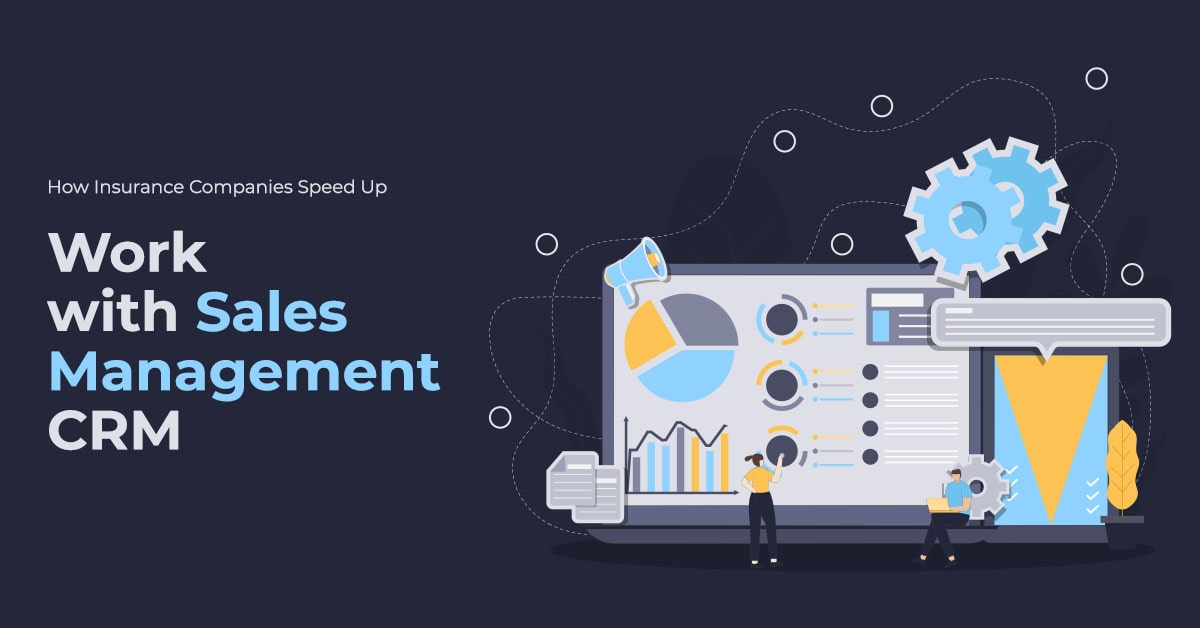How Insurance Companies Speed Up Work with Sales Management CRM

The COVID-19 pandemic has caused severe disruption in the insurance industry. But while the technical performance of insurance companies, particularly primary insurers, is unlikely to deteriorate materially, many see digitalization as a key strategy to ensure business continuity.
What does it mean to digitalize? And what is a sales management CRM’s role in all this?
What You Should Know
Insurance companies are expected to experience growth after the pandemic. Capturing leads is necessary to get cash flowin in and reduce the risk for insurance companies in general.
Many challenges that insurance companies experience such as managing records of leads and customers, the surge in customers contacting their insurer, and meeting different needs and expectations can be solved using a sales management CRM.
The CRM market for the insurance industry continues to grow year over year. In 2020, the market was estimated to be worth $12.86 billion.
Industry Stats
In 2019, the global average insurance penetration, an indication of the level of insurance development per country, was around 7.2%. This is expected to increase in the following years and mainly driven by emerging markets.
In 2020, the CRM market for the insurance industry, including banking and financial services, is worth $12.86 billion.
By 2020, most consumers’ preference, when it comes to insurance, shifted from in-person sales to other distribution methods such as phone, mail, and online. The latter, which used to account for only 17% in 2011 in sales, grew to 29% in 2020.
More than 41 million consumers were estimated to have an insurance “needs gap,” which means that these consumers claim that they need life coverage but do not have it.
Challenges in the Insurance Industry
Managing records of leads and customers
Many companies in the insurance industry experience difficulty keeping records of their leads and clients and determining at which stage a particular client is in. This makes it hard for sales teams to personalize their interaction and deliver a service that is relevant to the client’s needs and preferences.
To solve this problem, many companies use Excel or spreadsheets to keep track of their companies’ interactions with their clients. But this can get a little confusing especially when the company is dealing with hundreds of leads and clients.
Managing messy records can give sales teams a serious headache, which is why using sales management CRMs is highly recommended.
Increase in customers contacting their insurer
Unsurprisingly, an enormous increase in customers contacting their insurer was recorded during the surge of the coronavirus pandemic.
With companies removing their in-person channels as part of their precautionary measures, the volumes of customers going digital puts a pressure on insurers to upgrade their digital channels by first creating an operational online channel and send customers regular updates through email using automation to reserve the phone for urgent calls.
The upgrade is needed to ensure customers are engaged well, improving customer experience which translates into better lead generation performance and customer retention rates.
Meeting customer needs and expectations
Each customer has different needs and requirements hence a dry, delayed, and a generic service may lead to dissatisfaction for some customers. This is why insurance companies need to deliver a personalized service— a level of service that takes into account the individual customer’s needs, preferences, and expectations and the previous records of that customer’s engagement with the company.
To successfully meet these requirements, insurance companies are advised to take advantage of automation technologies to regularly send updates to customers to help shape their expectations, all without the need of human intervention.
Keeping track of team performance
The multiple heavy tasks involved in running an insurance company can easily make sales and marketing teams forget what they’re doing and lose sight of their objectives.
With multiple, customizable dashboards that provide a glimpse of team and company performance, insurance companies are guaranteed to constantly monitor whether they’re hitting the goal or not.
Get leads coming
For insurance companies to manage risks well, more clients are needed to get the money flowing and reduce the risk for all the clients involved.
This is why one of the main challenges for insurance companies is to get leads coming. Automating this task, such as building your landing page to capture website visitors is highly suggested.
Start your journey with Saphyte
Gain a competitive edge and drive growth for your insurance company using technology. Start your way to digitalization now by clicking here.